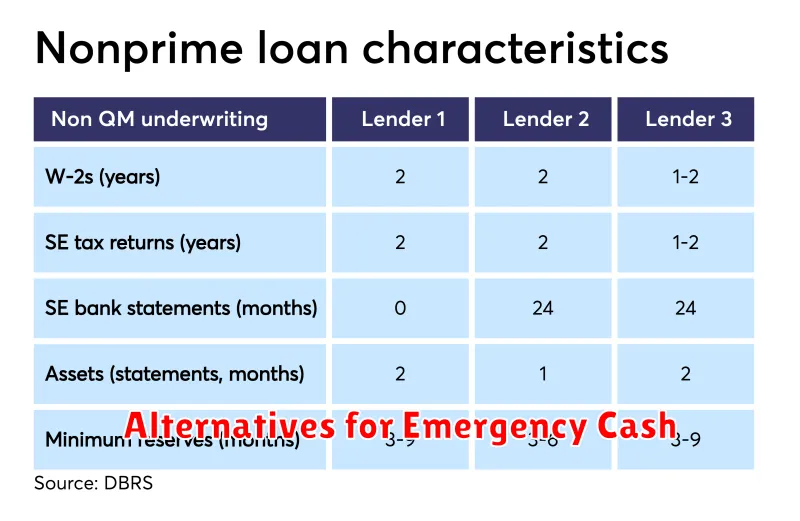Are you trapped in a cycle of payday loans? Feeling overwhelmed by high interest rates and struggling to make ends meet? You’re not alone. Millions find themselves caught in this vicious cycle, but escaping is possible. This comprehensive guide provides practical strategies and expert advice on how to break free from the grip of high-cost payday loans and regain control of your finances. Learn how to navigate the complexities of debt consolidation, explore alternative lending options, and develop a sustainable budget to prevent future reliance on short-term loans.
This article will equip you with the knowledge and tools necessary to overcome your financial hardship. We’ll delve into the dangers of payday loan debt, outlining the potential consequences of default and providing clear steps to effectively manage your existing debt. Discover proven techniques for improving your credit score, securing more favorable loan terms, and building a robust financial foundation that eliminates the need for predatory lending practices. Take the first step towards financial freedom and learn how to escape the payday loan trap for good.
What Are Payday Loans?
Payday loans are short-term, high-interest loans designed to be repaid on your next payday. They are typically small loans, often ranging from $100 to $500, and are marketed as a quick and easy solution for unexpected expenses.
To obtain a payday loan, borrowers typically need to provide proof of income and a bank account. The application process is often streamlined and can be completed online or in person at a storefront lender. Lenders often require access to your bank account to automatically debit the repayment amount on your payday.
While seemingly convenient, the high interest rates and fees associated with payday loans can quickly lead to a cycle of debt. These fees, expressed as Annual Percentage Rates (APRs), can be significantly higher than those of traditional loans, making it difficult to repay the loan on time.
The short repayment period is another significant drawback. Because the loan must be repaid within a short timeframe (usually two to four weeks), borrowers who are unable to do so may face additional fees and penalties. This can lead to a situation where borrowers continuously take out new loans to repay previous ones, effectively trapping themselves in a cycle of debt.
Understanding the inherent risks of payday loans is crucial before considering them as a financial solution. Exploring alternative options, like borrowing from family and friends or seeking assistance from credit counseling agencies, may prove to be more financially sound in the long run.
Why They’re Risky and Expensive
Payday loans are designed to trap borrowers in a cycle of debt. The high interest rates are the most obvious problem. These rates can easily exceed 400% annually, making even a small loan incredibly expensive to repay. This means a seemingly small loan can quickly balloon into a significant debt burden.
Beyond the interest, fees are another major contributor to the high cost. Late payment fees, origination fees, and other charges quickly add up, further increasing the total amount owed. These fees often outweigh the initial amount borrowed, leading to a vicious cycle of borrowing to cover previous fees and interest.
The short repayment period is another critical risk factor. Payday loans typically require repayment within a couple of weeks, often coinciding with the borrower’s next payday. However, many borrowers find themselves unable to repay on time, leading to rollovers and even higher fees. This constant need to borrow to repay previous loans is a hallmark of the payday loan trap.
Furthermore, lack of regulation in some areas allows lenders to operate with little oversight, leading to predatory lending practices. This can involve hidden fees, misleading advertising, and aggressive collection tactics. Borrowers are often left vulnerable and without adequate recourse.
Finally, the impact on credit score is significant. Missed payments or defaults on payday loans will negatively affect a borrower’s credit rating, making it harder to obtain credit in the future. This can impact access to mortgages, car loans, and even credit cards, further limiting financial opportunities.
Alternatives for Emergency Cash

Falling into the payday loan trap is easy, but escaping it requires careful planning and the exploration of alternative financial solutions. When faced with an unexpected emergency requiring immediate cash, the temptation to resort to high-interest payday loans is understandable. However, several viable alternatives exist that offer more manageable repayment terms and lower overall costs.
One of the most accessible options is to contact your bank or credit union. Many financial institutions offer short-term loans or overdraft protection with significantly more favorable interest rates than payday lenders. Exploring these options before considering payday loans can save considerable amounts of money in the long run. It’s important to understand the terms and conditions, but often these are far more affordable than payday loan alternatives.
Another strong alternative is to tap into your existing savings. While this might seem obvious, many people overlook the importance of building an emergency fund. Even a small emergency fund can prevent the need for a high-interest loan in times of crisis. Building and maintaining such a fund should be a financial priority for anyone aiming to avoid the payday loan cycle.
Borrowing from family or friends is another possibility. While this option might feel uncomfortable, borrowing from trusted individuals can be significantly cheaper than a payday loan, and often allows for flexible repayment arrangements tailored to your specific situation. Open and honest communication about repayment terms is crucial to maintaining these relationships.
Finally, consider the possibility of selling unused possessions. From gently used electronics to unwanted clothing, many items hold potential value. Online marketplaces and pawn shops offer convenient avenues for quickly converting unused assets into cash. This method provides immediate relief without incurring the heavy interest burdens associated with payday loans.
Building an Emergency Buffer
Falling into the cycle of payday loans often stems from a lack of financial stability. Unexpected expenses, like a car repair or medical bill, can quickly derail even the most carefully managed budget. Building an emergency buffer is the cornerstone of escaping this cycle. This is a dedicated savings account solely for unforeseen circumstances, preventing the need to resort to high-interest loans.
Start small. Even $100 saved is a significant step. Automate the process by setting up a recurring transfer from your checking account to your savings account, however small the amount. Consistency is key; think of it as paying yourself first.
Determine a realistic savings goal. While the ideal emergency fund is typically 3-6 months of living expenses, don’t get discouraged if you can’t reach that immediately. Start with a more achievable target, such as $500 or $1000, and gradually increase your savings over time.
Track your progress and celebrate milestones. Seeing your savings grow, even incrementally, can be incredibly motivating. Reward yourself for your fiscal responsibility, but within reason – avoid spending any savings from your emergency fund.
Consider utilizing high-yield savings accounts or other low-risk investment options to maximize your earnings. While the priority is to build the buffer, earning interest can accelerate your progress towards financial security.
How to Set Up a Repayment Plan
Falling into the trap of payday loans can feel overwhelming, but establishing a repayment plan is crucial for breaking free. The first step is to assess your situation honestly. List all your debts, including the payday loan principal, interest accrued, and any other outstanding financial obligations. Determine your monthly income after taxes and essential expenses.
Next, create a realistic budget. Prioritize essential expenses such as housing, food, utilities, and transportation. Identify areas where you can cut back on spending to free up funds for debt repayment. This might involve reducing entertainment expenses, canceling subscriptions, or finding cheaper alternatives for everyday necessities. The goal is to allocate as much disposable income as possible towards your debt repayment.
Contact your payday lender directly to discuss your repayment options. Many lenders are willing to work with borrowers who demonstrate a sincere effort to repay their loans. Be upfront about your financial struggles and propose a feasible repayment plan. This could involve extending the loan term, reducing monthly payments, or a combination of both. Ensure you get the agreement in writing to avoid future misunderstandings.
Consider seeking professional help. Credit counseling agencies can provide guidance in creating a budget, negotiating with creditors, and developing a comprehensive debt management plan. They may offer debt consolidation programs that can simplify repayment by combining multiple debts into a single, lower-interest loan. This can make managing your finances and tracking your progress easier.
Finally, be patient and persistent. Repaying debt takes time and effort. Stick to your repayment plan, monitor your progress regularly, and celebrate your milestones. By consistently making payments and adhering to your budget, you’ll steadily move toward financial freedom and escape the cycle of payday loan debt.
Where to Get Free Help

Falling into a payday loan trap can feel overwhelming, but numerous resources offer free assistance to help you escape the cycle of debt. These organizations provide guidance and support tailored to your specific situation.
Non-profit credit counseling agencies are a valuable first step. These agencies offer free or low-cost credit counseling, helping you create a budget, negotiate with creditors, and develop a debt management plan. They can provide valuable insight into your financial situation and guide you toward responsible debt repayment strategies. Many are affiliated with national organizations and offer services nationwide.
State and local government agencies also offer assistance. Many states have programs to help residents struggling with debt, including those dealing with predatory lending practices. These programs may provide financial literacy workshops, one-on-one counseling, or connect you with other relevant resources. Contact your local government or search online for “debt relief programs” in your state.
Religious organizations often provide financial assistance and counseling to members of their community. Churches, synagogues, and other faith-based institutions frequently offer support networks and may be able to connect you with financial aid programs or volunteer counselors.
Finally, consider reaching out to local charities and community organizations. Many non-profits focus on poverty alleviation and financial empowerment, and they may offer emergency financial assistance or connect you with relevant resources. These organizations often have strong ties to the community and can offer personalized support based on your individual needs.

